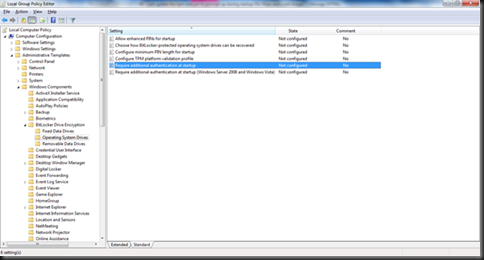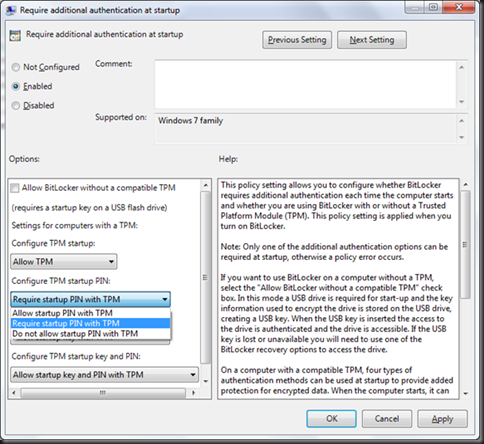Window 8 Beta is available for download since a couple of days. Build Windows conference participants got a Samsung touch tablet with Windows 8 and Visual Studio 11 preinstalled. These lucky guys can already use Visual Studio 11 to create Metro applications.
The tablet
If you don’t have a Windows 8 tablet. There is a solution however if you too want to create new Windows 8 Metro app. Microsoft Labs test Windows 8 on some Windows 7 touch hardware, the list is available on Windows Building 8 blog.
Here are some of the touch systems they use:
- HP Elitebook 2740p and 2760p convertible
- ASUS tablet EP121
- Dell Inspiron Duo Convertible
- Lenovo X201, convertible x220t
- 3M M2256PW 22 “display
They are touch laptops, except the Asus EP121 which is a tablet. Asus EP 121 tablet has 12″ touch screen, pen, Intel Core i5, 4GB RAM, SSD 64 GB, Bluetooth keyboard, two USB 2 ports, HDMI output for an external monitor … This tablet is widely available, and costs almost 1250 US$, 990 € or 900 UK £.I feel lucky, I buy one Asus EP 121 tablet at the nearest reseller, cross my fingers and hope I am able to install Windows 8 on it.
As I unpack the tablet, I download the ISO file of the 64-bit version of Windows 8 with integrated development tools. The download site says the 5 GB ISO file must be burnt on a dual-layer DVD. Then boot the device from the DVD to start installation.
Problem is the tablet does not have a DVD player. I must use an external USB drive.
Prepare an external USB drive to install Windows 8
If your tablet / laptop has a DVD player, you don’t have to use a USB drive. Just burn the ISO file on a dual layer DVD. If you don’t have a DVD player, you have no choice but to use a USB drive.
Note: a 8GB USB stick might be OK, but some people had problems using a USB stick. External USB drive seems to be recommended.
In searching the Web, several pages thought me that the disk must be NTFS formatted and bootable. It should not contain other data, so use an empty drive.
I’ve found references to Windows 7 USB/DVD download tool which might be able to setup a bootable USB drive from an ISO file, but it didn’t work for me. The tool couldn’t recognize my WD external drive.
Preparing the USB drive to install Windows with 8 is done in three steps.
1. First step is to format in NTFS.

Windows 7 Disk Management Utility allows you to:
- Format the drive in NTFS
- Mark the disk as Active (right click on disk, then click “Mark Partition as active”)
2. Second step is to make the drive bootable by copying the boot sector from Windows 8 ISO to the USB disk.
For that, mount the Windows 8 ISO file as a virtual disk. Run a DOS prompt in administrator mode (type cmd in Windows 7 start menu, then press Ctrl + Shift + Enter). Go to the BOOT folder of Windows 8 ISO and type the command:
Bootsect /NT60 I:
Where I: is the drive letter of the external USB drive. Replace it with the letter of your USB drive of course.

3.Last step is to copy all files from the Windows 8 ISO to the USB drive.
Installation
Plug the USB drive in the tablet and power it on. The installation program starts automatically.
You must first make Microsoft lawyers happy by reading the license agreement carefully (There won’t be a quiz later).
At some point, the installation program asks if you want to keep your data:

In fact, the previous version of Windows, programs and user accounts will not be deleted, but moved to a Windows.old folder. This is a new installation of Windows, not an update.
The installation process went without any problem. Hats off to Mr. Microsoft.

The tablet restarts, and still ask me if I want to install Windows 8. It’s time to unplug the USB drive and reboot.
The tablet configures itself. Then you must enter a Windows Live account name. It will be your username on the tablet. Windows settings and user data are automatically synchronized with your Skydrive account (you can disable that). Should I use Windows 8 on another PC, I could retrieve my configuration automatically.
Then Windows Metro start screen appears.

Visual Studio 11, Expression Blend 5, Windows 8 SDK and other tools are preinstalled. Cool.
The setup process went really smoothly. All devices were automatically recognized (touch screen, pen, sound, HDMI external display, USB, card reader, wifi, network, file sharing, media center streaming, webcam …) except the external Bluetooth keyboard. Tablet orientation detection doesn’t work either.
To get support for Bluetooth, I had to download the Windows 7 Bluetooth driver on Asus website, and install it in compatibility mode. It works fine under Windows 8. The keyboard now works fine.
Metro UI is quite pleasant to use, more than I expected. My first impression is quite good. It will be a lot of work to port applications to this platform.








